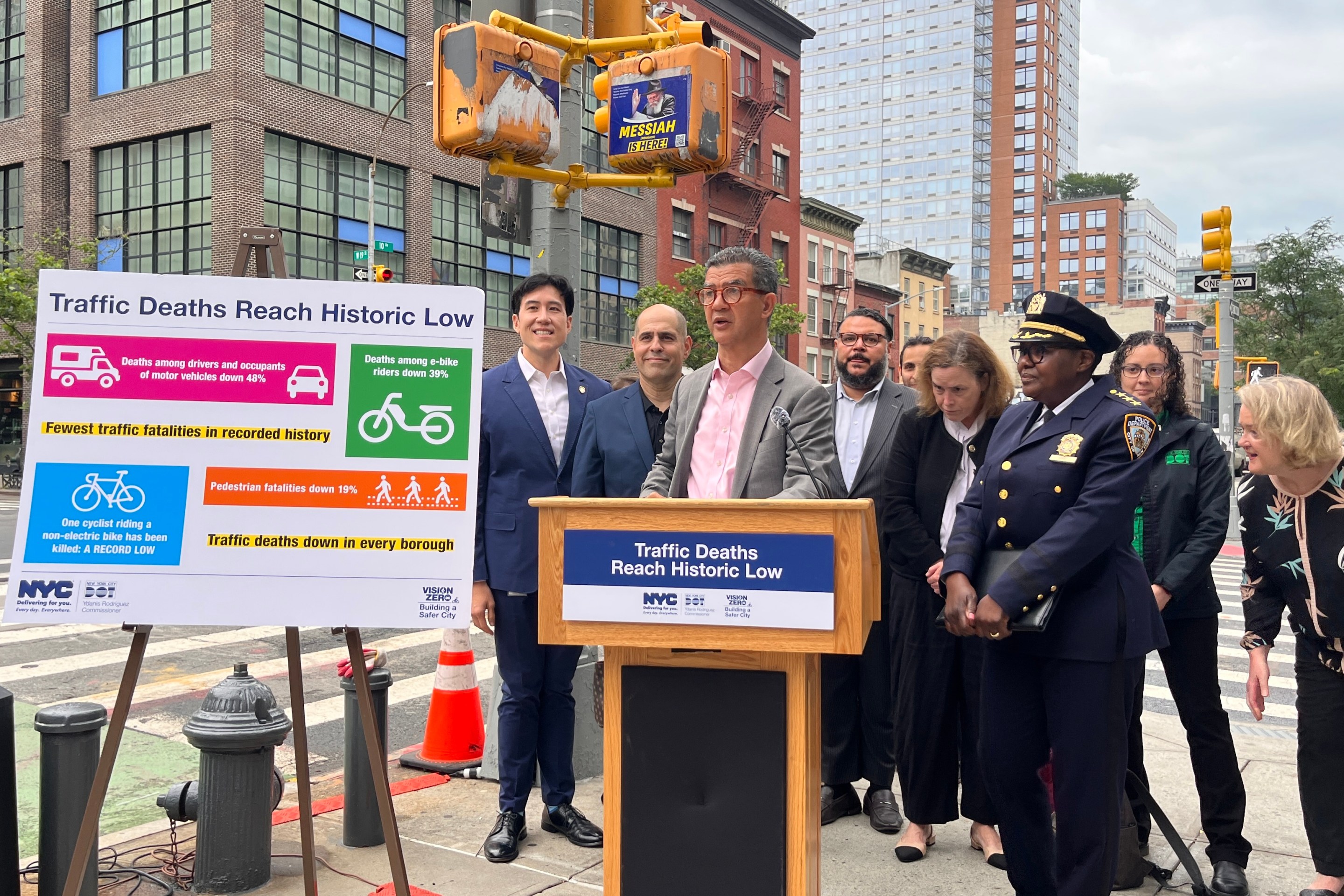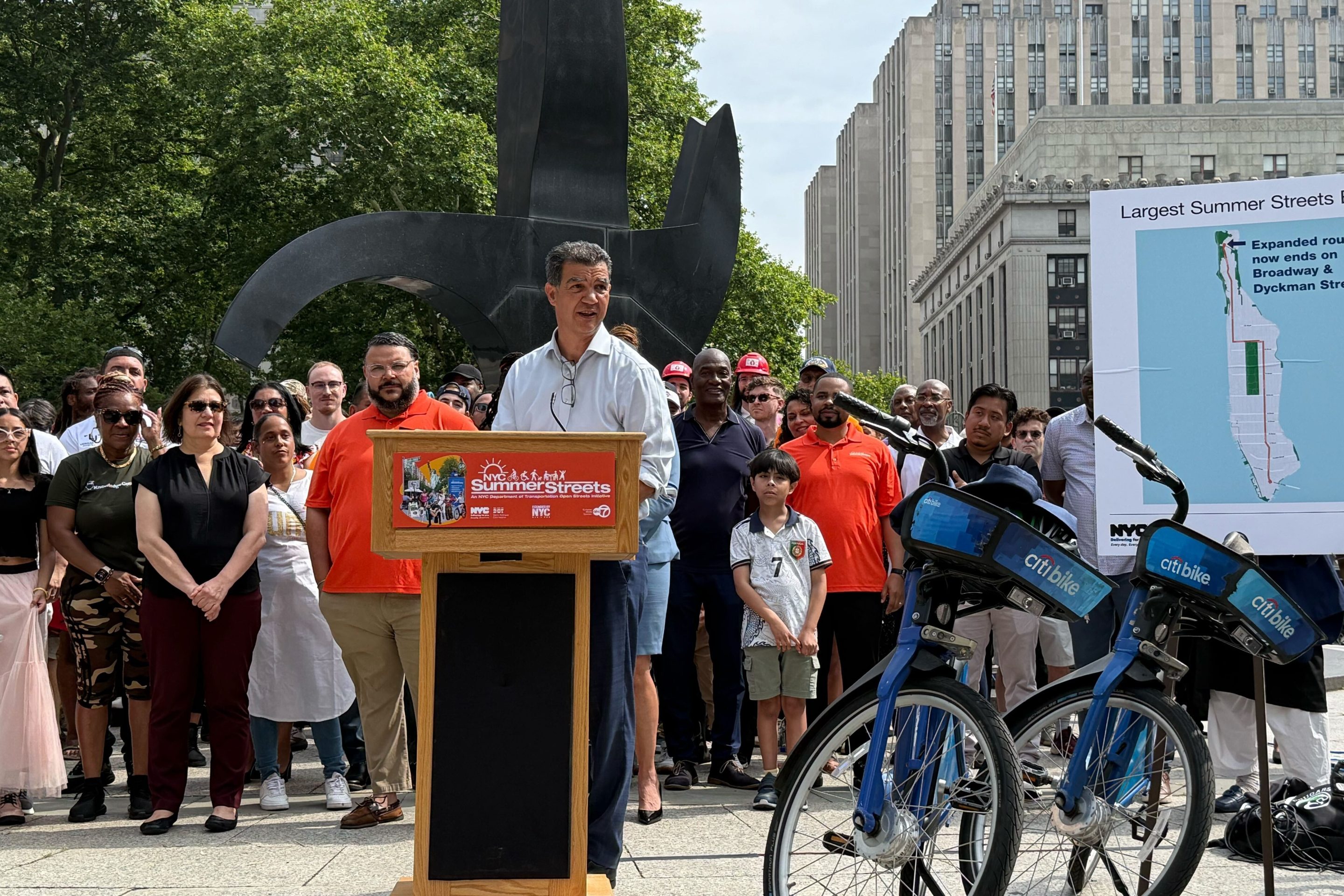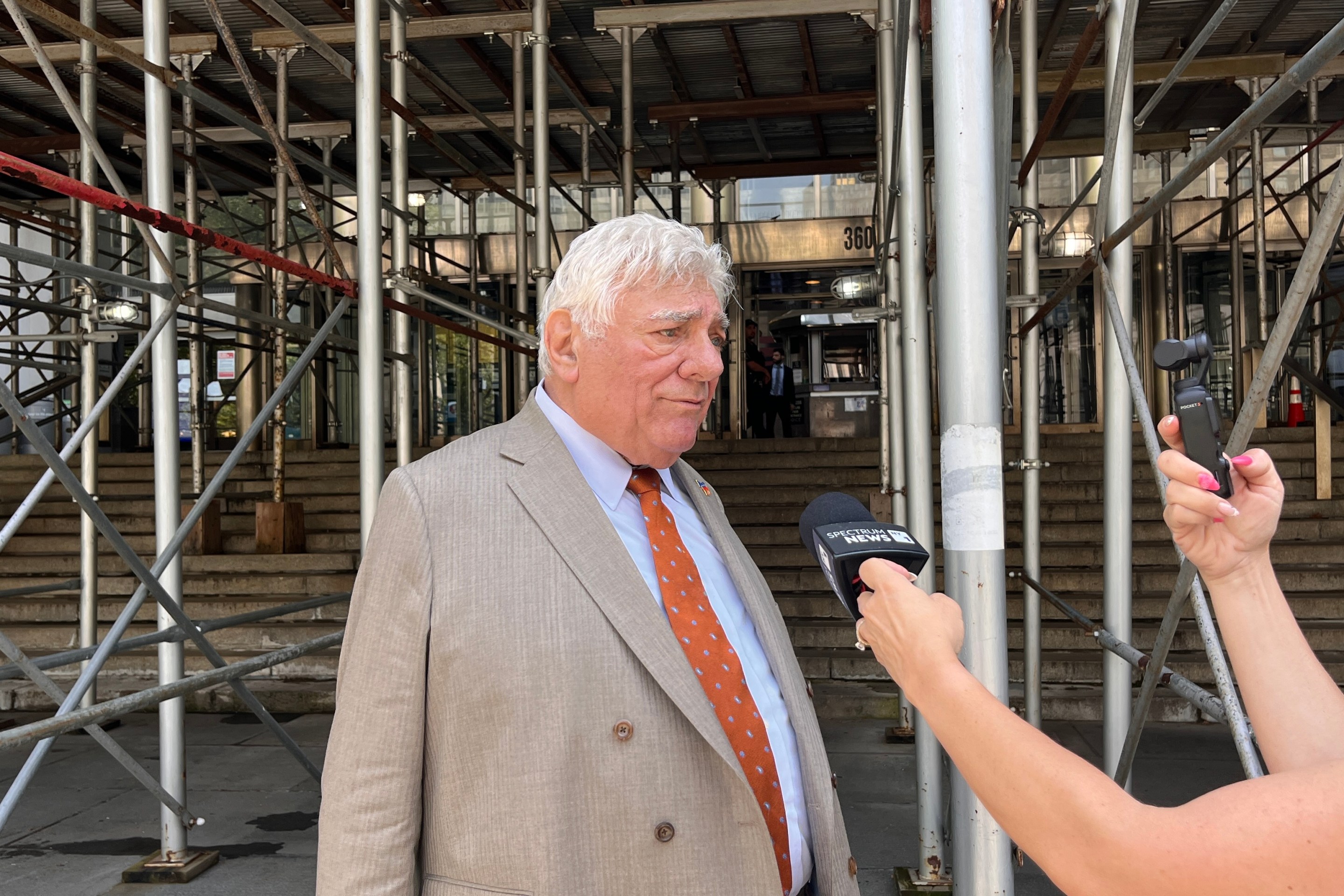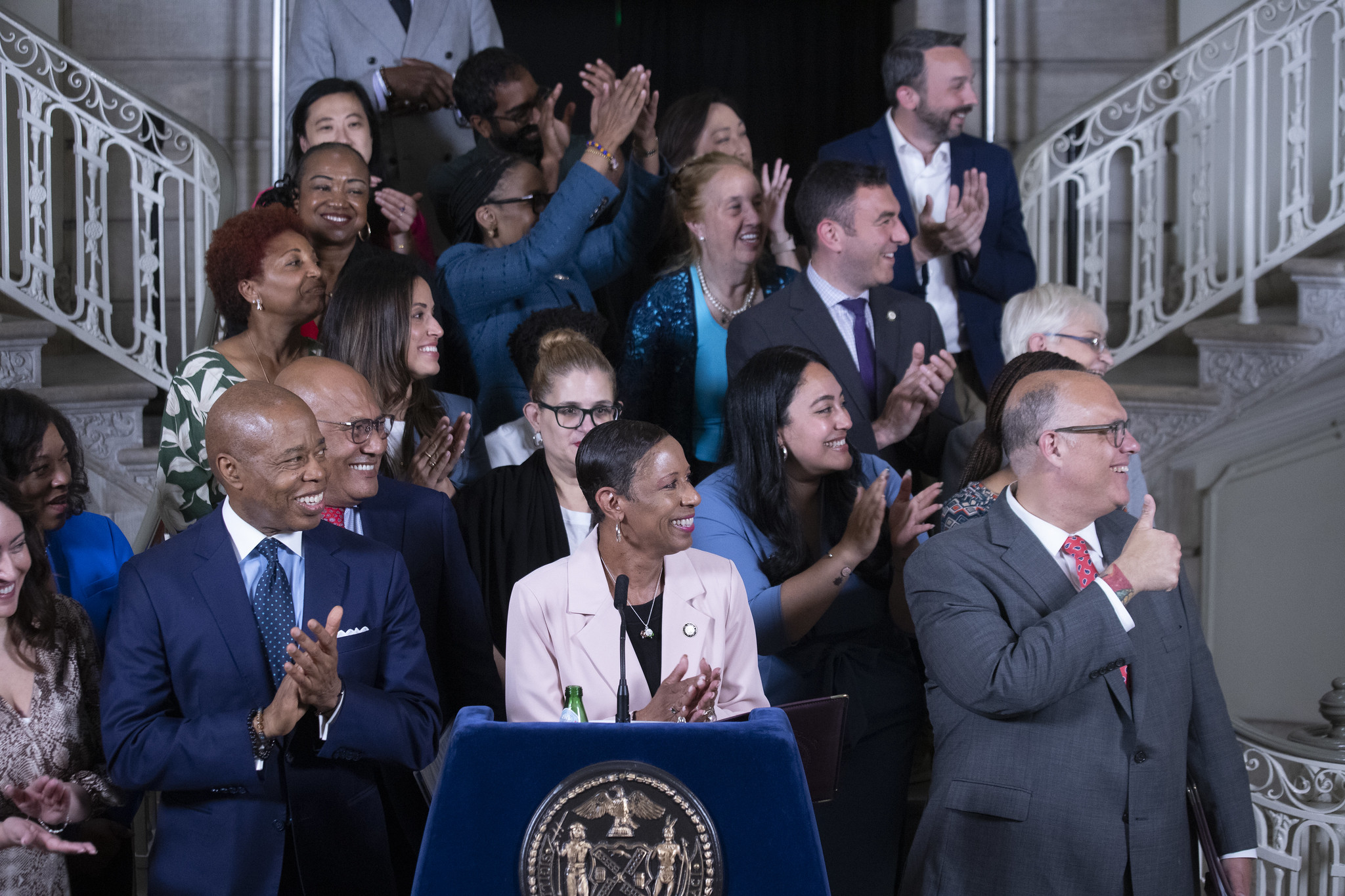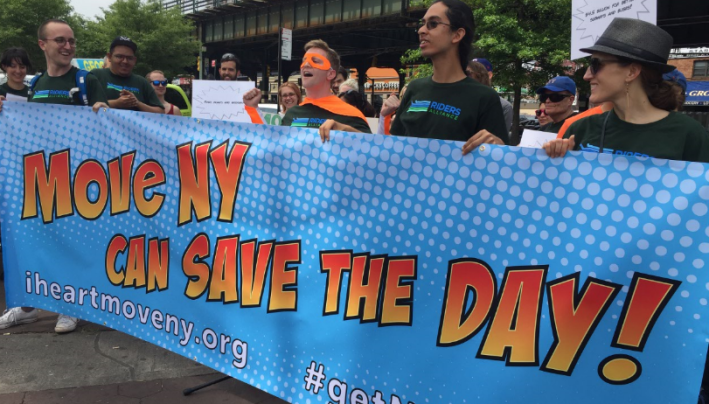
With the clock winding down on the legislative session in Albany, Queens activists are making the case for the Move NY toll reform package. Volunteers with the Riders Alliance and Transportation Alternatives rallied at the foot of the Triborough Bridge Saturday to call for a tolling system that works better for drivers and transit riders than the city's current hodgepodge of free bridges and priced MTA crossings.
Neighborhoods in western Queens are overrun by traffic heading to and from the free Queensboro Bridge. Move NY would put a price on that crossing, greatly reducing congestion in the area. But so far, State Senator Jose Peralta, whose district includes the northern part of Astoria, is the only Albany representative from the area to publicly endorse Move NY. (In the City Council, Jimmy Van Bramer is a supporter).
Western Queens representatives Cathy Nolan and Margaret Markey are not among the 28 Assembly members currently sponsoring Move NY legislation. (In eastern Queens, Vivien Cook and Andrew Hevesi have signed on.) State Senator Michael Gianaris has said he's "skeptical" of the plan.
Move NY aims to reduce congestion by putting tolls on the four East River bridges and a cordon across 60th Street in Manhattan. It also cuts the tolls on the Triborough, Whitestone, Throgs Neck, and Verrazano, where congestion is less intense. The net revenue from the toll swap would raise billions of dollars for transit, relieving the constant upward pressure on MTA fares and accelerating investments that can add capacity to a system straining at the seams.
Long Island City and Astoria are two neighborhoods that would benefit enormously from the traffic reduction effect of Move NY. The vast majority of residents don't own cars, and a truly small share car commute into downtown Manhattan each day. But everyone who lives in the area suffer the consequences of the city's dysfunctional tolling system.
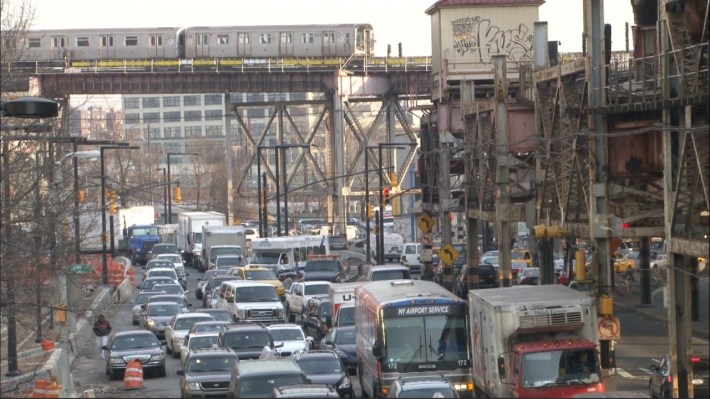
For instance, 21st Street is plagued by drivers seeking a shortcut to the Queensboro. "Look around, look at all the cars... not to see anything or shop in Astoria, but to shop bridges, to go to the Queensboro Bridge," said TA Queens volunteer Angela Stach. "21st Street is where most of the traffic goes between the bridges and it's one of the top ten high-crash corridors in the city."
Outside the Astoria Boulevard subway station, volunteers passed out flyers touting the benefits of Move NY for straphangers.
"Transit riders would finally have a source of dedicated funding for crowded and delayed subways and buses instead of living in fear of additional fare hikes," said Riders Alliance organizer and Queens resident Masha Burina.
